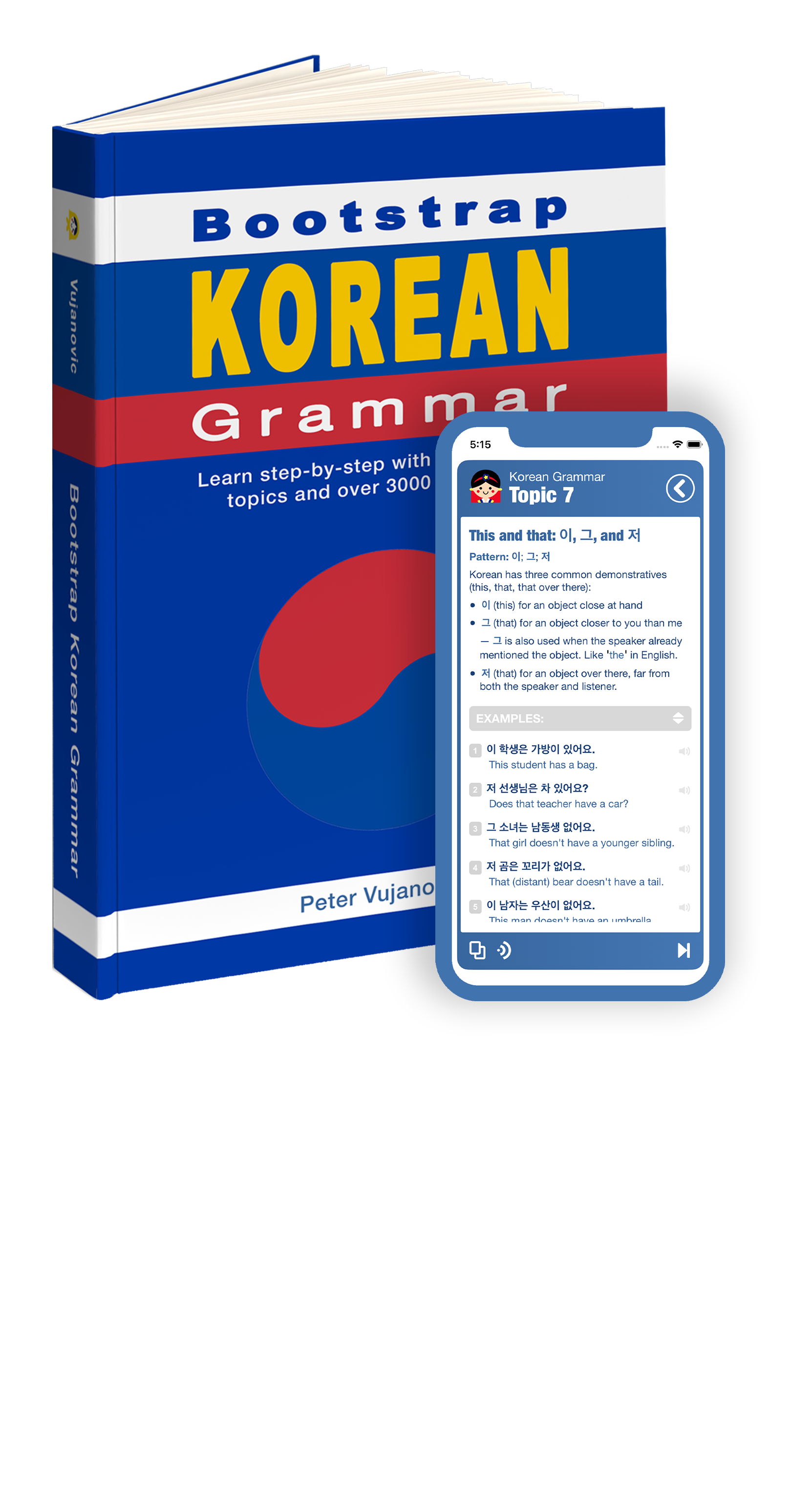Korean grammar - To look like - 보이다 |
|||
|
|||
The verb 보이다 (to be seen) is the passive version of 보다 (to see). 보이다 can be attached to a descriptive verb to mean 'to appear' or 'to look like'. The pattern is Descriptive Verb stem + 아/어/여 보이다. This pattern is often re-enforced with the word 처럼 which is an particle meaning 'similar', 'like' or 'as if'. |
| Examples: | |
|
그녀의 얼굴은 한국 사람처럼 보여요.
Her face looks like a Korean's face.
|
|
|
그건 나에게 너무나 어려운 문제처럼 보였어요.
It seemed like a very difficult question to me. |
|
|
그는 왜 그렇게 행복해 보여요?
Why does he look so happy? |
|
|
그 남자의 다리는 꽤 튼튼해 보여요.
The man's legs look pretty strong.
|
|
|
호텔 객실은 깨끗해 보여요.
The hotel room looks clean. |
|
|
그녀는 의욕이 많아 보여요.
She seems to have a lot of will power.
|
|
|
수진이는 전보다 많이 말라 보이죠?
Sujin looks a lot thinner than before, doesn't she? |
|
|
저의 남동생은 너무나 기뻐 보였어요.
My little brother looked so happy. |
|
|
그것은 나무처럼 보였지만 사실은 사람이었어요.
It looked like a tree, but it was actually a person. |
|
|
그 사람은 마치 화가 난 것처럼 보였어요.
The man looked angry. |
|
|
그 한식 식당은 항상 손님으로 붐벼 보여요.
That Korean restaurant seems to be crowded with customers all the time. |
|
|
그녀는 정말 불고기를 좋아하는 것처럼 보여요.
It looks like she really likes bulgogi. |
|
|
현경이는 모범생처럼 보이는군요.
(I am surprised that) Hyunkyung looks like a model student. |
|
|
하늘에서 곧 눈이 올 것처럼 보이네요.
It looks like it will snow from the sky soon. |
|
 |
|



